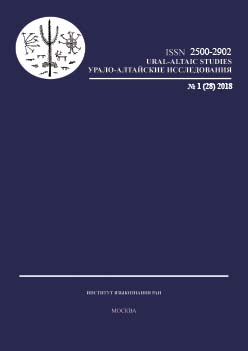Надписи на стеле Копёнского чаатаса в Хакасии
(К датировке южноенисейского рунического письма)
Inscriptions on the stele of Kopyonski chaatas in Khakassia (on the dating of the South Yenisei runic script)
Author(s): Igor L. KyzlasovSubject(s): Ethnohistory, Middle Ages, Historical Linguistics
Published by: Институт языкознания Российской академии наук
Keywords: Southern Siberia; early Middle Ages; burial ground Kopyonsky chaatas; runiform letters; Turkic people;
Summary/Abstract: Almost thirty years ago, several runiform alphabets related to each other and used in the early Middle Ages were distinguished in both European and Asian parts of Eurasia. Those alphabets do not belong to any of the already known runiform Turkic written systems, i. e., Orkhon, Yenisei or Talas. This article is the first publication of two short inscriptions found in 1940 on a stele of the Kopyonsky chaatas in Khakassia by S. V. Kiselyov and L. A. Evtyukhova and studied by the author of the article in their original form. These inscriptions belong to the so-called South Yenisei writing that has not yet been deciphered. Nowadays, a handful of written monuments made in this writing are known on the territory of the Altai-Sayan uplands and Mongolia. This script came to those parts of Asia from outside between the end of the 8th and the first half of the 9th centuries, and neighbored with the Yeniseian script. It is possible that the South Yenisei inscriptions were made by people of Manichaean faith in some Turkic language.
Journal: Урало-алтайские исследования
- Issue Year: 2018
- Issue No: 01 (28)
- Page Range: 23-32
- Page Count: 10
- Language: Russian

